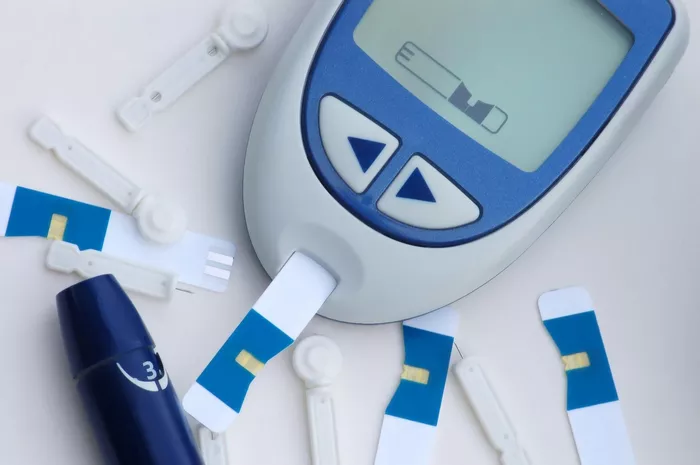Introduction
Diabetes mellitus, a chronic metabolic disorder characterized by high blood sugar levels, affects millions of individuals worldwide. While it manifests in various symptoms and complications, one of the most prevalent urinary symptoms associated with diabetes is polyuria. Polyuria, defined as excessive urination, often serves as an early indicator of diabetes mellitus and can significantly impact an individual’s quality of life if left unmanaged. In this article, we delve into the mechanisms behind polyuria in diabetes mellitus, its clinical significance, and strategies for effective management.
Understanding Diabetes Mellitus
Before delving into the urinary symptomatology, it’s crucial to grasp the fundamentals of diabetes mellitus. The condition encompasses a group of metabolic disorders characterized by elevated blood glucose levels resulting from defects in insulin secretion, insulin action, or both. Insulin, produced by the pancreas, facilitates the uptake of glucose into cells, where it is utilized for energy production or stored for future use. In diabetes mellitus, this regulatory mechanism is disrupted, leading to hyperglycemia, the hallmark feature of the disease.
Types of Diabetes Mellitus
Diabetes mellitus is broadly categorized into several types, with the most common being type 1 diabetes, type 2 diabetes, and gestational diabetes. Type 1 diabetes typically develops in childhood or adolescence and results from the autoimmune destruction of pancreatic beta cells, leading to absolute insulin deficiency. Type 2 diabetes, more prevalent in adults, involves insulin resistance and relative insulin deficiency due to a combination of genetic and lifestyle factors. Gestational diabetes occurs during pregnancy and is characterized by glucose intolerance that usually resolves after childbirth, although it predisposes individuals to type 2 diabetes later in life.
Polyuria: The Most Common Urinary Symptom
Polyuria, often referred to as the passage of abnormally large volumes of urine, stands out as one of the most common urinary symptoms associated with diabetes mellitus. Individuals with diabetes frequently experience increased urinary frequency and volume, which can disrupt daily activities and impair sleep quality. Polyuria typically occurs due to several interrelated factors:
- Osmotic Diuresis: In uncontrolled diabetes mellitus, particularly type 1 diabetes, the absence or insufficient action of insulin impedes glucose uptake by cells, leading to hyperglycemia. Elevated blood glucose levels surpass the renal threshold for glucose reabsorption, resulting in the presence of glucose in the urine (glycosuria). Glucose in the urine creates an osmotic effect, drawing water from the body into the urinary tract, thereby increasing urine production and output.
- Fluid Intake: Polyuria may also be influenced by increased fluid intake, as individuals with diabetes mellitus may consume more fluids to alleviate thirst caused by hyperglycemia and glycosuria. Excessive fluid intake further contributes to increased urine volume and frequency.
- Renal Function: The kidneys play a pivotal role in regulating fluid balance and electrolyte levels in the body. In diabetes mellitus, persistent hyperglycemia can damage the delicate structures within the kidneys, impairing their ability to concentrate urine efficiently. Consequently, the kidneys excrete larger volumes of dilute urine, exacerbating polyuria.
Clinical Significance of Polyuria in Diabetes Mellitus
Polyuria serves as a key clinical manifestation of diabetes mellitus and holds significant diagnostic and prognostic implications:
- Early Indicator: Polyuria often manifests early in the course of diabetes mellitus, sometimes even before other classical symptoms such as polydipsia (excessive thirst) and weight loss become apparent. Recognizing polyuria prompts further evaluation for diabetes mellitus, facilitating early diagnosis and intervention.
- Glycemic Control: The severity of polyuria correlates with the degree of glycemic control in individuals with diabetes mellitus. Poorly controlled diabetes, characterized by persistent hyperglycemia, is associated with more pronounced polyuria. Effective management of blood glucose levels through lifestyle modifications, medication adherence, and insulin therapy can mitigate polyuria and its associated complications.
- Risk of Dehydration: Excessive urination in diabetes mellitus predisposes individuals to dehydration, electrolyte imbalances, and potential renal dysfunction. Dehydration can exacerbate hyperglycemia and lead to complications such as diabetic ketoacidosis (DKA) in type 1 diabetes or hyperosmolar hyperglycemic state (HHS) in type 2 diabetes. Therefore, maintaining adequate fluid intake and monitoring hydration status are crucial in managing polyuria.
Management Strategies for Polyuria in Diabetes Mellitus
Effective management of polyuria in diabetes mellitus involves a multifaceted approach aimed at addressing underlying causes and optimizing symptom control:
- Glycemic Control: Central to managing polyuria is achieving and maintaining optimal glycemic control. This entails regular monitoring of blood glucose levels, adherence to prescribed medications (including insulin or oral hypoglycemic agents), and adopting a balanced diet and exercise regimen. Tight glycemic control helps mitigate the osmotic diuresis associated with hyperglycemia, thereby reducing polyuria.
- Fluid Management: While adequate fluid intake is essential to prevent dehydration, individuals with diabetes mellitus should be mindful of excessive fluid consumption, which can exacerbate polyuria. Healthcare providers may recommend fluid restriction in cases of severe polyuria or concomitant kidney dysfunction. Monitoring urine output and adjusting fluid intake accordingly can help maintain fluid balance.
- Renal Protection: Protecting renal function is paramount in individuals with diabetes mellitus, given the heightened risk of diabetic nephropathy (kidney disease). Strategies to preserve renal health include blood pressure control, management of proteinuria, and avoidance of nephrotoxic agents. Regular monitoring of kidney function through blood tests and urine analysis is essential for early detection of renal complications.
- Medication Adjustment: In some cases, adjusting medications may be necessary to alleviate polyuria and optimize symptom management. Diuretics, commonly prescribed for conditions such as hypertension or heart failure, may exacerbate polyuria and should be used judiciously in individuals with diabetes mellitus. Healthcare providers may also consider modifying antidiabetic medications to minimize polyuria-related side effects.
- Lifestyle Modifications: Encouraging lifestyle modifications, such as smoking cessation, limiting alcohol intake, and maintaining a healthy body weight, can positively impact polyuria and overall diabetes management. Engaging in regular physical activity not only improves glycemic control but also helps regulate fluid balance and urinary function.
Conclusion
Polyuria, characterized by excessive urination, is a common urinary symptom of diabetes mellitus, reflecting underlying metabolic disturbances and renal dysfunction. Understanding the mechanisms driving polyuria and its clinical significance is crucial for timely diagnosis and effective management of diabetes mellitus. By implementing comprehensive strategies encompassing glycemic control, fluid management, renal protection, medication adjustment, and lifestyle modifications, healthcare providers can mitigate polyuria-related complications and enhance the overall well-being of individuals living with diabetes mellitus.
In conclusion, polyuria represents a significant clinical challenge in diabetes mellitus, underscoring the importance of holistic management approaches to optimize patient outcomes and quality of life. Continued research into the pathophysiology of polyuria and the development of targeted therapies will further advance our understanding and treatment of this prevalent urinary symptom in diabetes mellitus.



























